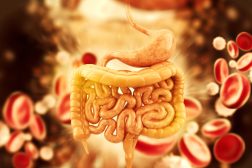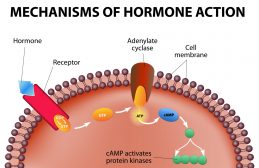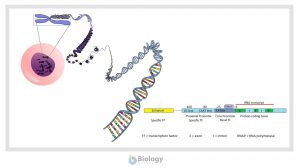Definition
noun
Regions on chromosomes that are condensed permanently, genetically inactive, and always in the same position on homologous chromosomes
Supplement
Heterochromatin pertains to the darkly stained regions of the chromatin in the interphase nucleus. The lightly stained regions are referred to as euchromatin. The heterochromatic regions indicate tightly packed genetic material and undergo relatively little change in the degree of condensation as it passes through the cell cycle. They are usually found in the periphery of the nucleus. It is described to be genetically inactive due to the inaccessibility to polymerases, thus, evading transcription. There are different heterochromatin varieties, e.g. constitutive heterochromatin and facultative heterochromatin.
Constitutive heterochromatin is mainly found at centromeric and telomeric regions. In humans, heterochromatic regions abound in chromosomes 1, 9, 16, 19, and on Y chromosome.1 The less condensed heterochromatin is the facultative heterochromatin. C banding may be employed to visualize and identify constitutive heterochromatic regions. Facultative heterochromatin does not stain with C banding technique.
Structurally, constitutive heterochromatin is repetitive whereas facultative heterochromatin is not. Furthermore, constitutive heterochromatin is transcriptionally inactive at all times. In contrast, facultative heterochromatin may at time lose its condensed state and become transcriptionally active.
Compare:
See also:
Reference(s):
1 Strachan, T. & Read, A. (2004). Human Molecular Genetics 3. Garland Publishing. pp. 256–295.







